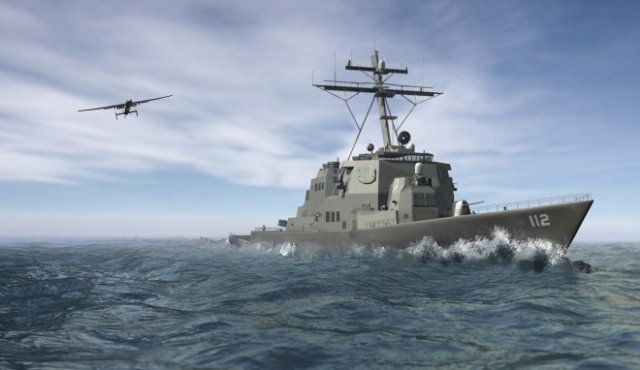 Northrop Grumman and Carter Aviation Technologies have been hired for a $9 million effort to conceptualize an armed UAS that will launch from a small ship to strike as far as 900 nautical miles away, according to the Pentagon. A test launch is slated for 2017.
Northrop Grumman and Carter Aviation Technologies have been hired for a $9 million effort to conceptualize an armed UAS that will launch from a small ship to strike as far as 900 nautical miles away, according to the Pentagon. A test launch is slated for 2017.
Physics is a key challenge in this endeavour. The Defense Department will have to solve the puzzle of “how to boost a UAS to flight velocity without the benefit of a five-acre aircraft carrier deck, and without resorting to a speed- and range-limiting helicopter design.”
Northrop Grumman’s share of the Tactically Exploited Reconnaissance Node contract is $2.9 million and Carter Aviation will be paid $2.2 million, Pentagon officials said on Friday. Last month, Maritime Applied Physics and AeroVironment were awarded $2.2 million and $2.3 million, respectively. Defense’s incubator, the Defense Advanced Research Projects Agency, can spend up to $8.9 million on the effort — the first of three stages involved in launching a prototype.
Northrop, Carter and the others will have a little less than a year to devise a way of building an affordable aircraft and a conceptual design. The goal is to fly and recover a demonstration UAS from a vessel, such as a Littoral Combat Ship 2, within about 40 months.
Only contractors employed for this phase are eligible for the two later development projects.
The new Tactically Exploited Reconnaissance Node programme, or Tern, which “envisions using smaller ships as mobile launch and recovery sites for medium-altitude long-endurance fixed-wing unmanned aircraft” was announced in March. “It’s like having a falcon return to the arm of any person equipped to receive it, instead of to the same static perch every time,” Daniel Patt, DARPA Programme Manager, said during the announcement of the programme. “About 98 percent of the world’s land area lies within 900 nautical miles of ocean coastlines. Enabling small ships to launch and retrieve long-endurance UAS on demand would greatly expand our situational awareness and our ability to quickly and flexibly engage in hotspots over land or water.”
The UAS should “enable new aviation capabilities for the Navy fleet, extending the situational awareness and reach of smaller vessels,” contract documents state.
Image: TERN Concept – DARPA
Source: NextGov
